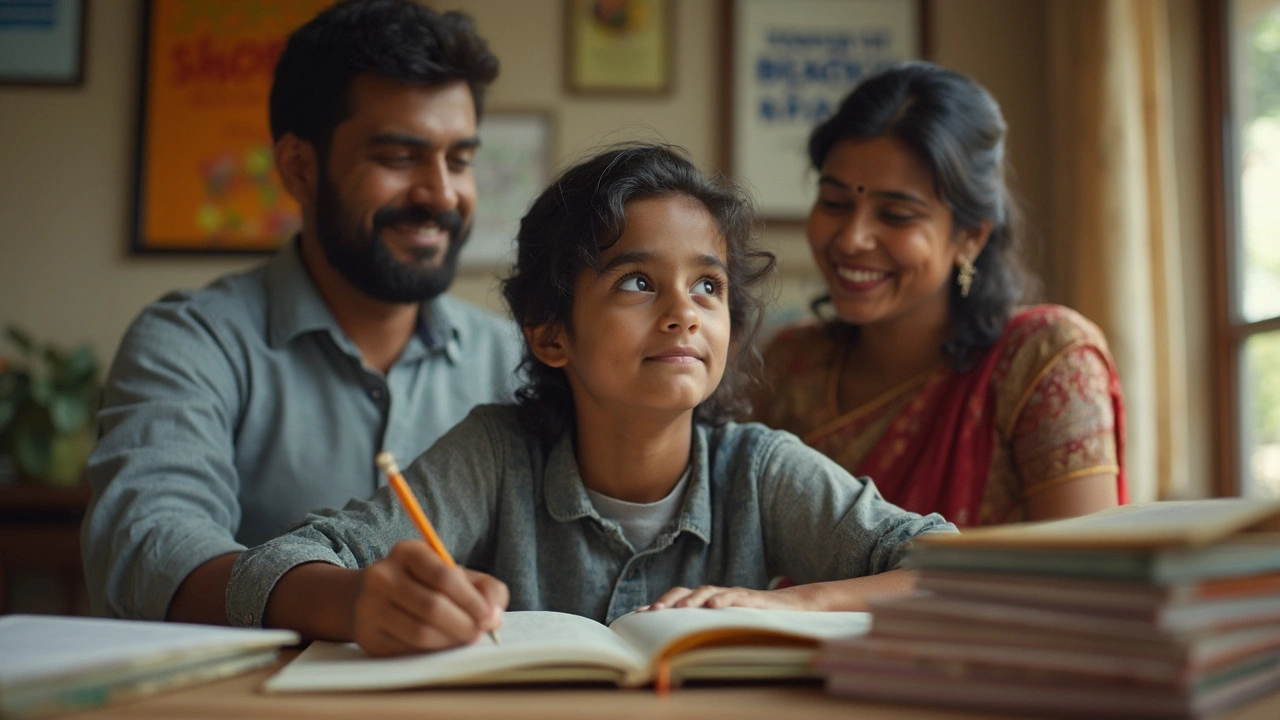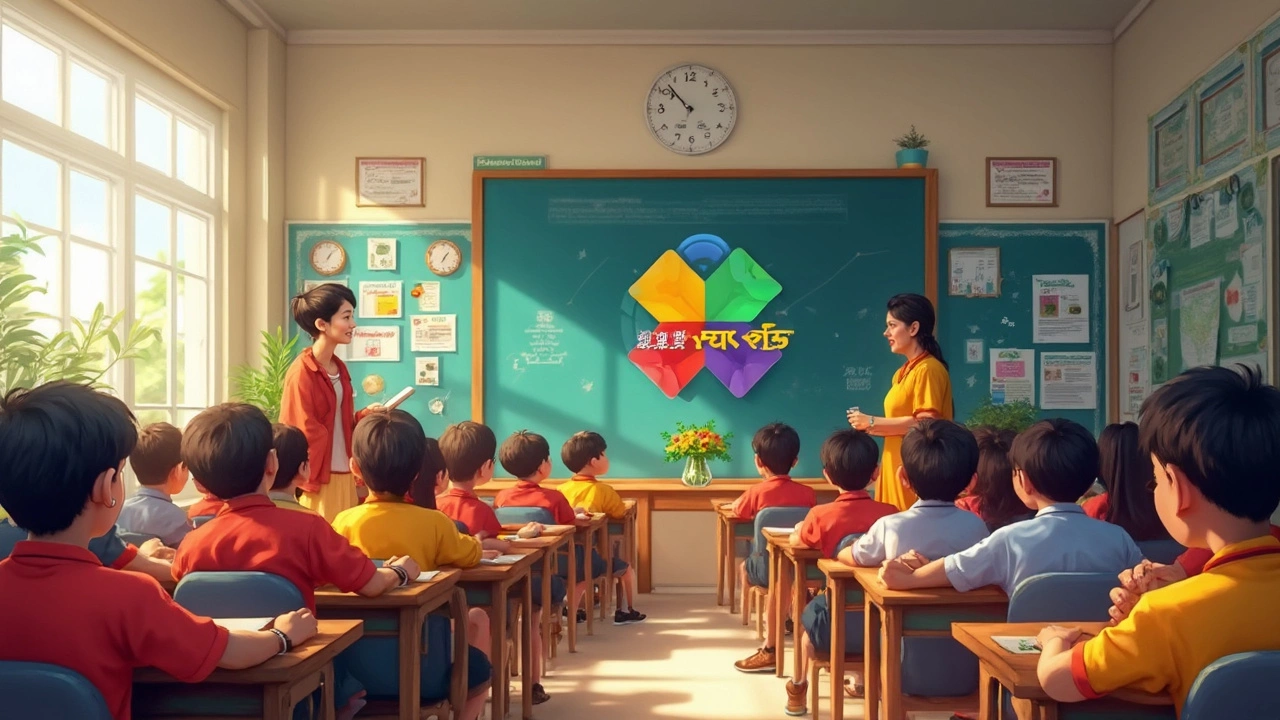Start talking about schools in India for more than five minutes, and someone is bound to mention 'CBSE.' It’s a weird feeling – you could bump into a teenager in Delhi, a parent in Mumbai, or someone running a coaching class in Kerala, and if you say those four letters, there’s instant recognition. CBSE isn’t just another education board. For millions, it’s the system that defines which textbooks to buy, when the summer break starts, even what to cram for the big exams. But here’s the kicker: most folks mention CBSE daily, yet barely scratch the surface of what it really is or why it exists. And, if you think it’s just a government label stuck on the back of your kid’s report card, you might be in for a surprise.
Cracking the Acronym: What Exactly Does CBSE Stand For?
It’s spelled out in lots of places, but let’s say it again for the folks at the back: CBSE means Central Board of Secondary Education. Sounds pretty official, right? Here’s how it breaks down. Picture India in the 1950s, getting used to its independence and pretty much building everything from scratch, including how schools work. The government wanted a single board to oversee and standardize educational quality across regions and languages. The goal? Make sure a kid moving from Agra to Ahmedabad, or Jalandhar to Jaipur, wouldn’t have to start from zero in a totally new curriculum.
CBSE didn’t just pop out of nowhere. It began in 1929 as a small board set up for central government schools, especially for the children of railway employees who transferred all over the country. Over the decades, it grew into the single largest school board in India, currently overseeing more than 28,500 affiliated schools worldwide. Let that sink in for a second. The board now extends to over 25 countries – yes, there are CBSE schools in places like Singapore, Bahrain, and Russia, mostly for expat Indian kids. That standardization? It works. Whether you’re sweating it out in Kolkata’s humidity or trying to concentrate during a dust storm in Abu Dhabi, if you’re in a CBSE school, the textbook content and the test schedules match up.
Here’s a quick look at just how widespread CBSE is today:
| Year | Number of CBSE schools | Countries Outside India |
|---|---|---|
| 2000 | 7,800 | 11 |
| 2010 | 14,200 | 21 |
| 2023 | 28,573 | 26 |
For families that move a lot, like mine when Eliora was little and we shifted cities three times in six years, the consistency is a big relief. She didn’t have to start back at long division each time. And for students? You’re looking at a system designed to keep things fair, regardless of where you study. The Board conducts all-India exams for classes 10 and 12, setting the benchmark for college admissions and job eligibility everywhere.
But this board doesn’t just hand out report cards. It sets the syllabus, manages the evaluation process, trains teachers, and even decides on things like compulsory subjects and exam structures. If you were ever told you needed to learn a third language or take up Science right up to class 10, that's CBSE policy in action. It keeps tweaking its structure, syllabus, and exam patterns. Remember the shift to continuous and comprehensive evaluation (CCE) a decade ago? Or the switch to multiple-choice type questions for tests? Each change is about keeping up with changing educational trends, both at home and globally.

Inside the System: How CBSE Shapes Education for Millions
What really sets CBSE apart from other boards isn’t just the scale, it’s how closely its decisions touch everyday student life. Take the curriculum, for example. CBSE’s courses and textbooks, mostly written by the National Council of Educational Research and Training (NCERT), are designed to be clear and straight to the point. There’s less fluff, and it’s almost like someone tried to keep the lessons as universal as possible. The reason? The board wants a system that works everywhere, for everyone. Forget twenty different history books for twenty different states – there’s one NCERT book on Indian history for urban and rural, rich and poor alike. That’s huge in a country as diverse as India.
Here’s how the system operates, in a nutshell:
- Standard Syllabus: Uniformity across all affiliated schools – no matter the state or the region, the syllabus, and exam dates are the same.
- Centralized Examinations: CBSE conducts board exams for Classes 10 and 12, which are considered among the toughest school-level exams in India. The results can open (or close) doors for college admissions, especially in science and engineering streams.
- Constant Monitoring: Regular evaluation of schools, teacher development programs, and audits keep everything up to scratch.
- Openness to Change: Frequent updates and pilot projects, like adding coding and financial literacy to the curriculum, show that the board doesn’t get stuck in a rut.
Let’s drop some numbers to see the impact. In 2023, more than 3 million students sat for the Class 10 CBSE board exams. About 1.5 million took the Class 12 exams. That’s more than the entire population of some countries. And when the results get announced, it’s like the whole nation holds its breath. Television channels run scrolling tickers with topper names, and websites crash under the rush.
But it’s not all about the books or exam halls. CBSE has launched helplines for exam stress – because yes, the pressure is real. There are even guidelines for schools on topics like student safety, bullying prevention, and how to identify learning disabilities. And, let’s not ignore the digital upgrades. When COVID hit and schools shut, CBSE moved quick: online lessons, digital textbooks, even virtual exam prep support for students at home. Digital transformation is a big part of its forward push. By late 2023, nearly all board exam processes—registration, admit cards, result announcements—had been digitized.
Parents often ask: What’s the CBSE teaching philosophy really all about? Is it just mug-and-vomit? Actually, the board pushes kids towards application-based questions more than rote memorization, especially in recent years. If you look at the tiny print in those sample papers, you’ll see marks given for critical thinking, logical deduction, diagram-based answers, and project work. Plus, the board tries to balance 'exam marks' with CCE and practicals, so kids who learn differently aren’t totally left behind.
Now, compare with other boards like the Indian Certificate of Secondary Education (ICSE) or the various State Boards. ICSE often includes more literature, multiple language choices, and a broader arts curriculum, while State Boards may focus on regional content or operate in local languages. CBSE’s edge is its wider acceptance, especially for entrance exams like JEE and NEET. In fact, the syllabus for major competitive entrance exams often overlaps heavily with CBSE-prescribed content. This means students in CBSE schools already have a solid base, making the transition smoother.
It’s far from perfect, of course. Critics say the system, for all its size and efficiency, still puts too much weight on exams. Student stress, tuition dependence, and a rat-race culture frequently follow. But every year, the board rolls out tweaks to try and keep up: more open-book questions, more projects, and even sports and wellness thrown into the curriculum to balance things out. It’s a work in progress, but at least it’s moving.

Navigating CBSE: Tips, Insights, and What to Expect for Students and Parents
The most important thing to know for anyone jumping into the CBSE world is that it rewards consistency more than last-minute heroics. My daughter Eliora is proof of that—regular study, a balanced workload, and a bit of curiosity can take a child a long way. So, what should you expect?
- CBSE schools usually stick to strict academic calendars, and holidays don’t shift much.
- The school workload can feel heavy at first, especially if you’re new to the system. But if you use a timetable and cover small chunks daily with revision, you won’t feel swamped when term tests or pre-boards come around.
- The same curriculum is taught in Hindi or English, so kids who move from rural schools to big cities (or vice versa) don’t struggle as much with the material itself—just the language and style of teaching change.
- Parents of younger children: Keep an eye on continuous assessments. These include project work, group activities, and oral tests, not just written papers. Teachers usually explain the assessment breakdown every term.
- All CBSE textbooks are from NCERT, and they’re usually available for free online (check ncert.nic.in). If your school tries to push extra non-NCERT books for the main syllabus, question it.
- CBSE roll numbers and admit cards are now generated online. You can check everything, from results to sample papers, right on the official cbse.gov.in website – and that’s legitimate, not some fly-by-night blog.
- When exam season wreaks havoc at home, check out the CBSE helpline. The Board runs stress-busting advice lines every year, especially helpful for students panicking before results.
- If your child has a specific learning need (like dyslexia or ADHD), CBSE schools are supposed to provide accommodations, extra time, or even a scribe in exam rooms. Don’t be afraid to ask for what you need early in the year.
Here’s a tip for students prepping for entrance exams: stick to the CBSE and NCERT books as your Bible. Whether it’s JEE, NEET, or even the CLAT and NDA, exam setters draw heavily from these textbooks. Spending thousands on fancy ‘reference guides’ might not help as much as mastering the basics.
Want your child to shine? Remind them that the real secret of CBSE isn’t about getting a 99% on paper. It’s about how well you can solve real-life problems, think logically, and communicate clearly. The best CBSE students pick up skills like time management, clear writing, and diagram-based explanations. These things matter whether your kid ends up studying medicine, engineering, law, or even art.
There’s one more nifty thing for parents: CBSE runs all sorts of national-level olympiads and scholarships—from math and science to creative writing and computer coding. Encourage your child to participate. Real learning often blooms outside the standard test paper.
Finally, remember this: CBSE isn’t just a board or an acronym. For crores of Indian students (and their tired but hopeful parents), it’s the bridge between a school desk and the rest of the world. When you spot a CBSE topper’s photo in the news or see a group of teens hunched over a practice paper in a noodle shop, you know you’re watching the next chapter of the Indian education story play out—one worksheet, one question, one syllabus at a time.
